Abstract
A 1981 national survey of women's drinking interviewed 917 women in the general population, stratified on the basis of screening interviews to include 500 moderate-to-heavy drinkers. The survey found no evidence of any major recent increase in women's drinking, and no evidence of unusually heavy drinking among working wives. Adverse drinking consequences and episodes of extreme drinking were most common among women aged 21-34; women who were unmarried, divorced or separated, or cohabiting; and women with frequent drinkers as spouses or companions. Alcohol-related behavior problems and symptoms of alcohol dependence were closely related to levels of alcohol consumption. Among women averaging one ounce or more of ethanol per day, 45 per cent had driven while intoxicated in the past year, and 36 per cent reported memory lapses while drinking. Women at this consumption level were also more likely to report experiences with depression (61 per cent). Women with extremely high consumption levels were more likely to have histories of obstetrical and gynecological problems. Some women with alcohol-related problems reported periods of temporary abstention, a pattern not studied heretofore.
Full text
PDF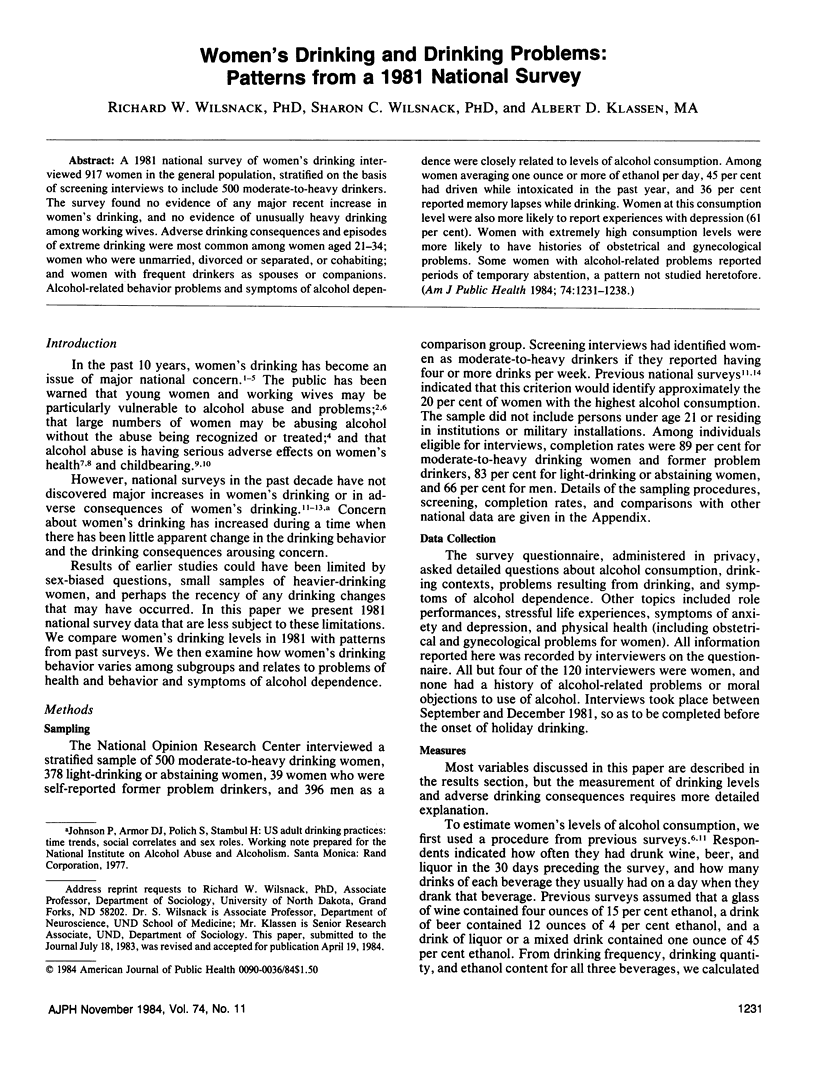
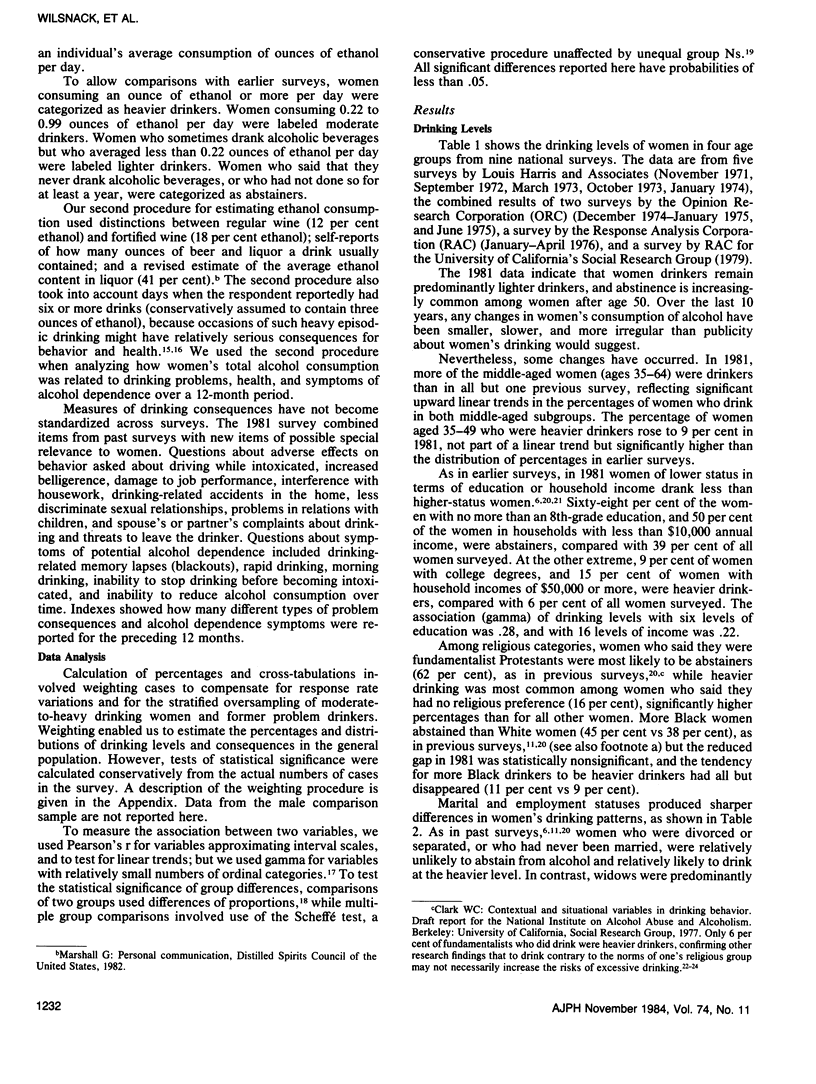
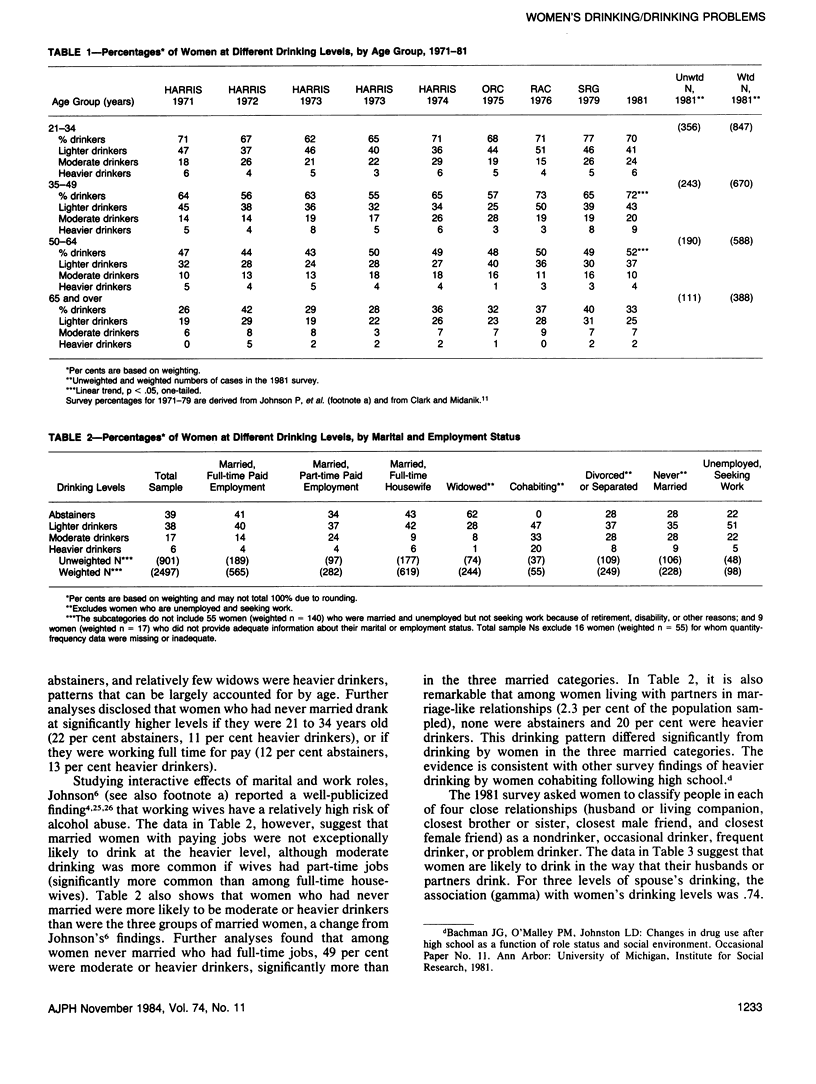
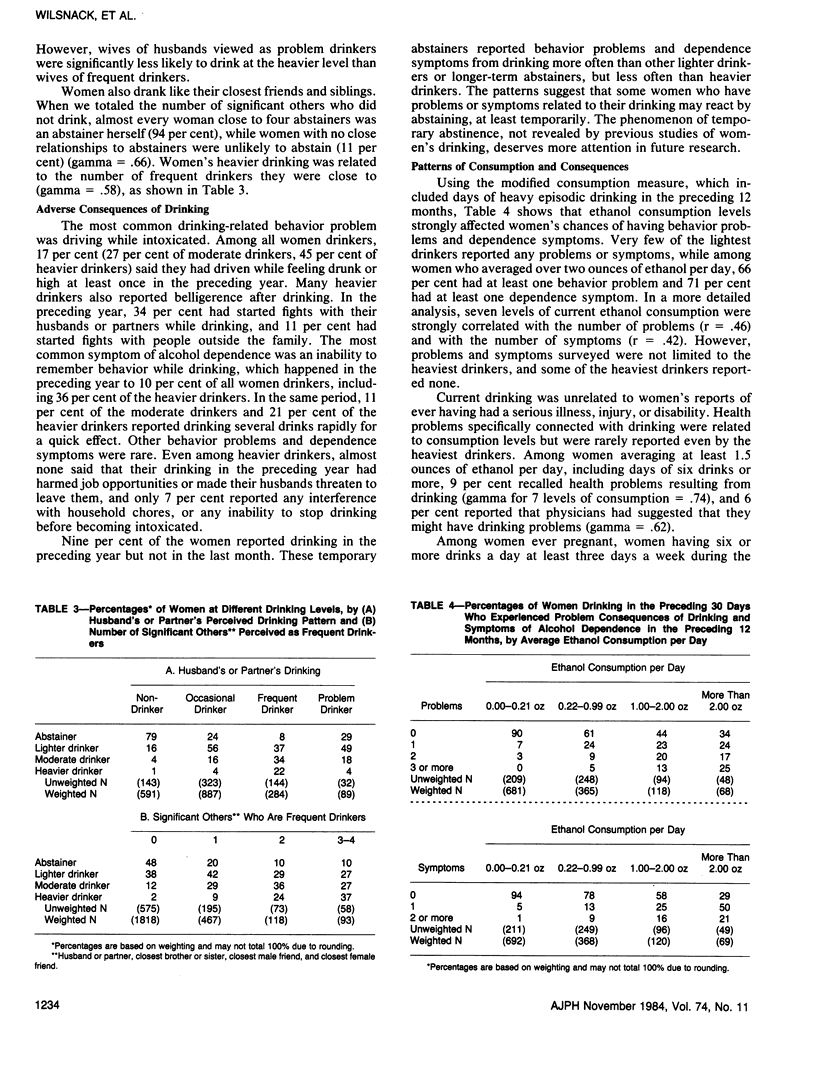
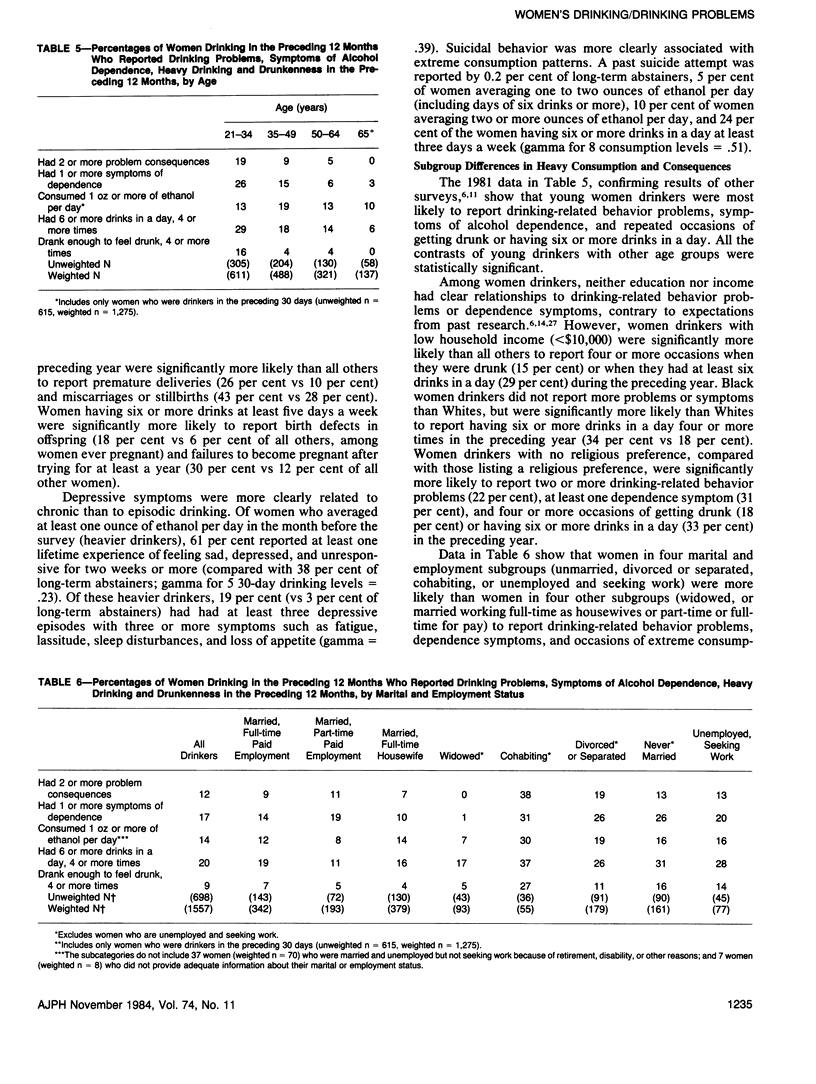
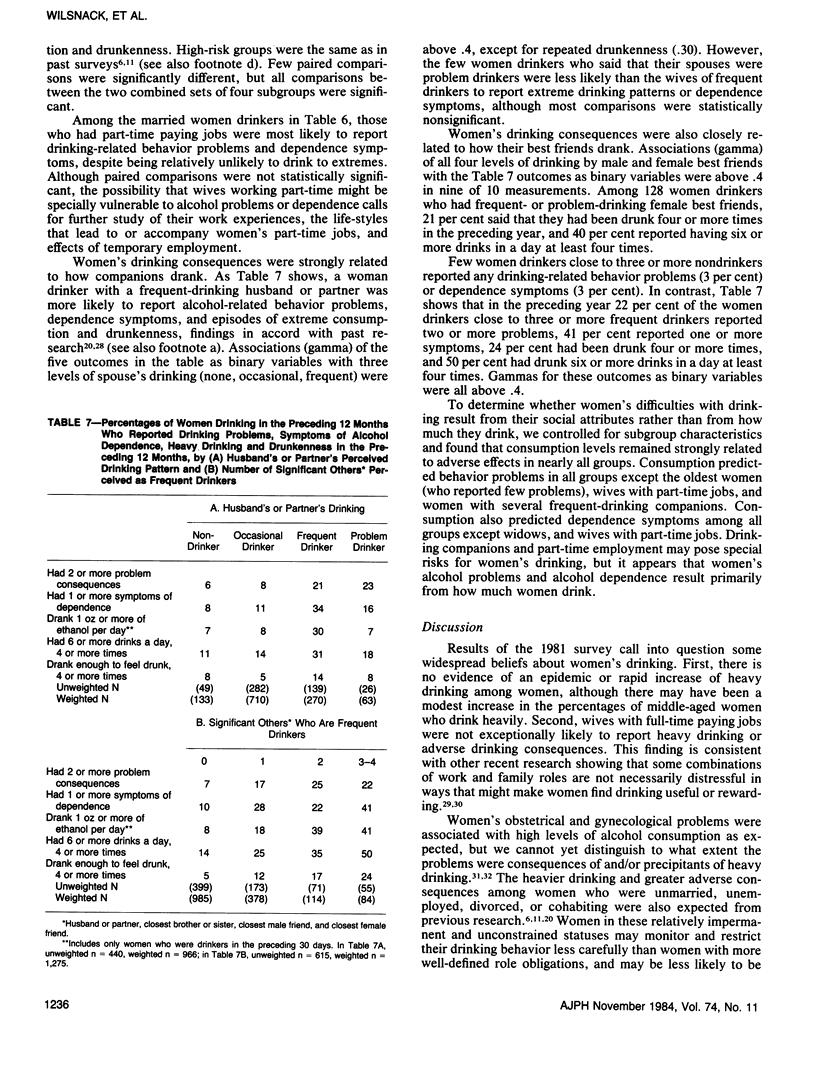
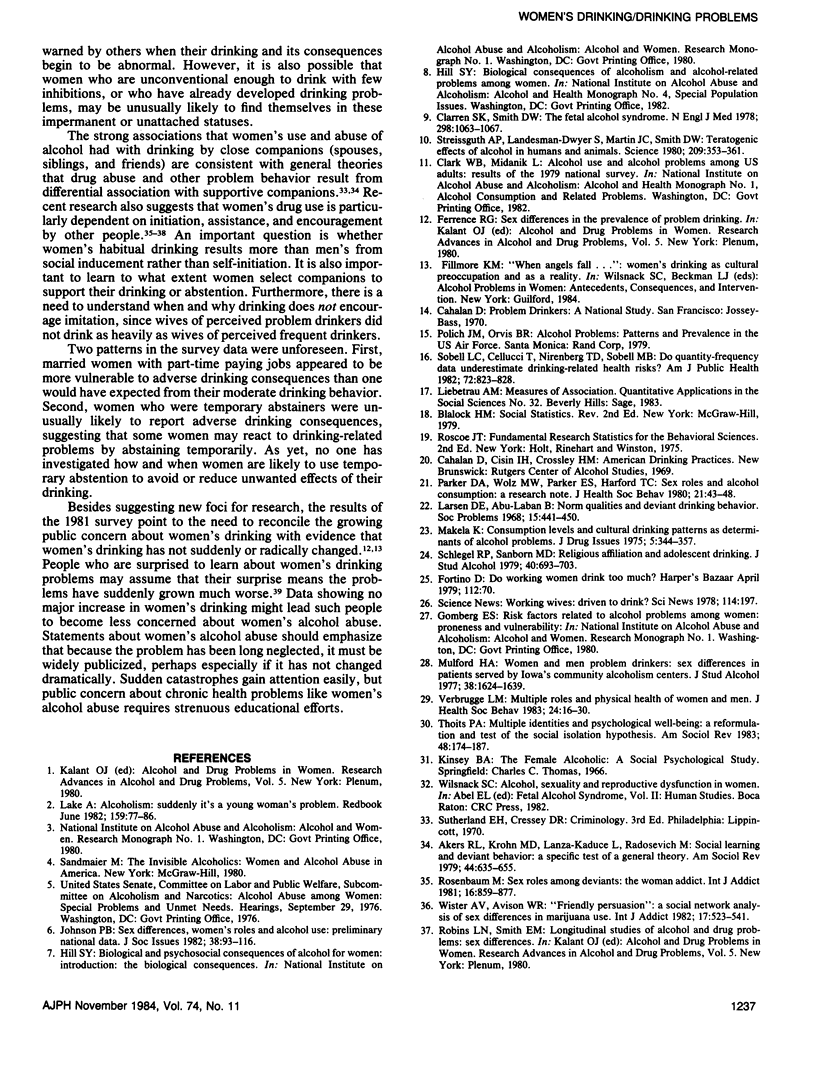
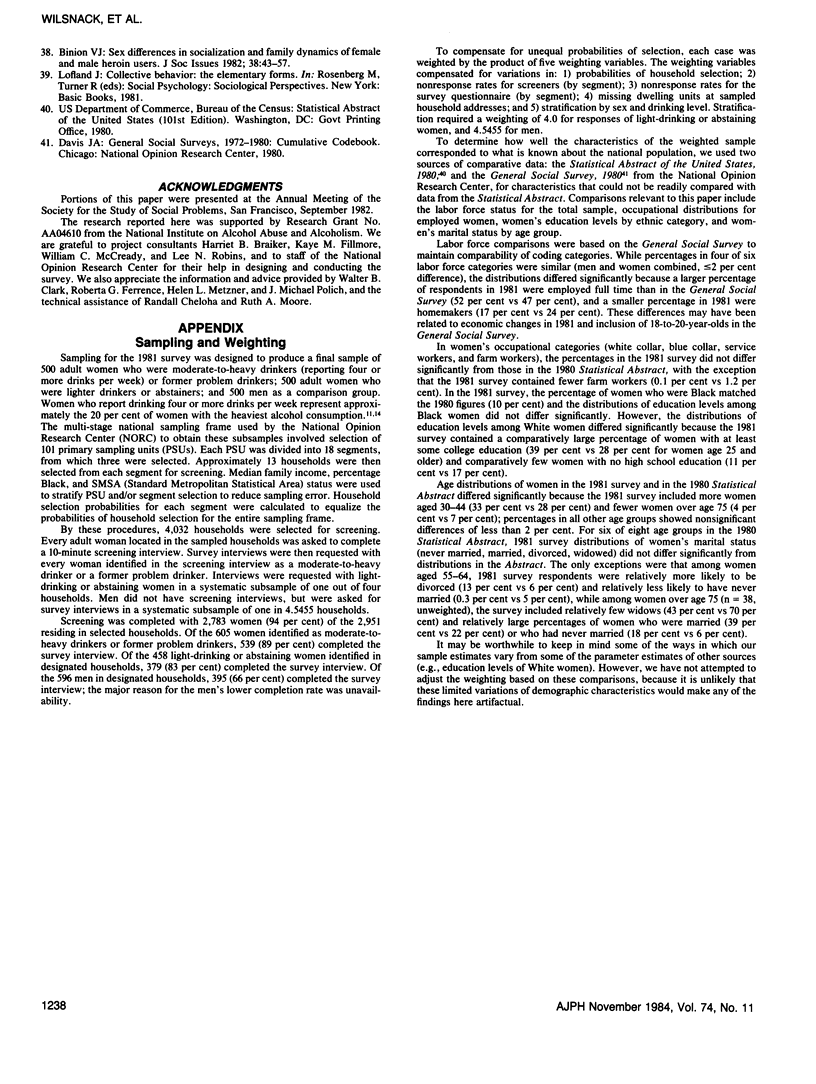
Selected References
These references are in PubMed. This may not be the complete list of references from this article.
- Akers R. L., Krohn M. D., Lanza-Kaduce L., Radosevich M. Social learning and deviant behavior: a specific test of a general theory. Am Sociol Rev. 1979 Aug;44(4):636–655. [PubMed] [Google Scholar]
- Clarren S. K., Smith D. W. The fetal alcohol syndrome. N Engl J Med. 1978 May 11;298(19):1063–1067. doi: 10.1056/NEJM197805112981906. [DOI] [PubMed] [Google Scholar]
- Mulford H. A. Women and men problem drinkers. Sex differences in patients served by Iowa's Community Alcoholism Centers. J Stud Alcohol. 1977 Sep;38(9):1624–1639. doi: 10.15288/jsa.1977.38.1624. [DOI] [PubMed] [Google Scholar]
- Parker D. A., Parker E. S., Wolz M. W., Harford T. C. Sex roles and alcohol consumption: a research note. J Health Soc Behav. 1980 Mar;21(1):43–48. [PubMed] [Google Scholar]
- Rosenbaum M. Sex roles among deviants; the woman addict. Int J Addict. 1981 Jul;16(5):859–877. doi: 10.3109/10826088109038895. [DOI] [PubMed] [Google Scholar]
- Schlegel R. P., Sanborn M. D. Religious affiliation and adolescent drinking. J Stud Alcohol. 1979 Jul;40(7):693–703. doi: 10.15288/jsa.1979.40.693. [DOI] [PubMed] [Google Scholar]
- Sobell L. C., Cellucci T., Nirenberg T. D., Sobell M. B. Do quantity-frequency data underestimate drinking-related health risks? Am J Public Health. 1982 Aug;72(8):823–828. doi: 10.2105/ajph.72.8.823. [DOI] [PMC free article] [PubMed] [Google Scholar]
- Streissguth A. P., Landesman-Dwyer S., Martin J. C., Smith D. W. Teratogenic effects of alcohol in humans and laboratory animals. Science. 1980 Jul 18;209(4454):353–361. doi: 10.1126/science.6992275. [DOI] [PubMed] [Google Scholar]
- Thoits P. A. Multiple identities and psychological well-being: a reformulation and test of the social isolation hypothesis. Am Sociol Rev. 1983 Apr;48(2):174–187. [PubMed] [Google Scholar]
- Verbrugge L. M. Multiple roles and physical health of women and men. J Health Soc Behav. 1983 Mar;24(1):16–30. [PubMed] [Google Scholar]
- Wister A. V., Avison W. R. "Friendly persuasion": a social network analysis of sex differences in marijuana use. Int J Addict. 1982 Apr;17(3):523–541. doi: 10.3109/10826088209064056. [DOI] [PubMed] [Google Scholar]


